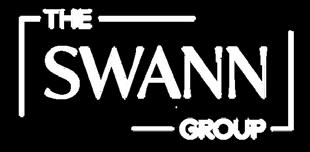

THE NOE VALLEY VOICE
• Abel Grebenik •
A Perfect Afternoon
“Do you think pigeons care about each other?” asked the four-year-old boy as he sat with his father on the outer rim of the Town Square. It was a typical Sunday at the square—red chairs and strollers scattered in odd directions, and a disheveled man strumming his guitar about twenty feet away. Adults and children milled about, and one little girl with her hair in pigtails chased a trotting pigeon until it finally had enough and flew away.
The boy watched with great interest as he and his father shared a Noe bagel sandwich at a metal table. Next to a coffee from Bernie’s, the white wrapping paper lay unfolded like a tiny bistro cloth—though on a June Sunday in San Francisco, it was only moments from being blown away.
He consumed the beige wad in his hand in true four-year-old fashion: a messy, distracted bite, his small brown eyes squinting at everything except the food he held.
“Two more bites,” said his father, sensing his son’s eagerness to abandon the sandwich on top of the table.
“The pigeons!” the boy insisted, now pointing with the hand that held a single napkin.
“No, I don’t think they care about us,” the father replied mindlessly, taking another bite of his own sandwich.
“But we care about them, don’t we, Dada?” The boy mumbled as he chewed.
Just then, a large cream-colored moth appeared from the oak tree above. Dozens of diurnal moths swirled overhead—drawn to this particular tree for some reason—but this one seemed especially interested in the boy. On any other day, he might have swatted at the moth like a frisky house cat, but today he was suspicious of its motives. With both hands, he pulled his sandwich protectively toward his armpit and glared at the insect as it drifted slowly back into the tree.
The father reached for his coffee but, misjudging its placement, knocked it over. The contents spilled across the table.
“Shoot,” he grunted as milky-brown beads streamed to the ground, narrowly avoiding both himself and his son.
“Shoot,” he repeated, placing his only napkin futilely in the center of the puddle.
Surprisingly, the boy had little reaction. He simply tossed his own napkin onto the table and watched as the brown liquid consumed it.
In Fine Voice

It’s okay, Dada.” He said waving his wrist to the sky. “With our napkins together, we can clean up any mess!”
The man looked at his son and slowly smiled—wider than he had all day. Ignoring the spill, he paused, and for a moment, it was as if he were taking it all in for the first time. The distant guitar, the summer breeze on his skin. He reached out and ran his fingers through the boy’s hair.
“That’s right, buddy,” he replied.
Abel Grebenik is a dedicated local psychotherapist specializing in parent and child behavior. Recently, he has recently embraced creative writing as a new hobby.
A special thanks to the poets, fiction writers and essayists who have contributed to this issue. Our biannual edition features some of our most literate neighbors. We’re sure you’ll appreciate it.
Words Among Friends and Neighbors
It’s time again for the creatives living with and around us to take over the pages of the Noe Valley Voice. We do this twice a year— in August and January.
Music and visual art are available in Noe Valley, but we intend to promote writing in all its forms.
The following pages feature stories and poetry that we hope will engage and stimulate you.
¿Dónde Estå el Raton de Biblióteca?
Our resident bookworm Karol Barske has the month off from crafting the More Books to Read page and Calendar. Mazook is also exempt from reporting the Rumors Behind the News, as are our other reporters and photographers. Supreme Boss editor Sally Smith is chilling in her Diamond Heights abode. All will return rested and ready with our September edition.
Thank you for reading and supporting our efforts.
We want to hear from you. Your participation is always welcome at noevalleyvoice.com.
Jack Mellender
FRIENDSHIP
A half a century ago a San Francisco summer guy with wind-blown locks made quite a show: beneath his grin whimsic'ly wry love beads o'er Nehru jacket green, bell-bottoms tie-died particolor and sandals of a crimson sheen festooned each with a silver dollar. While panhandling at Cole and Haight he hailed a dour ex-Navy clerk, a poet, lately Yeoman's-mate, whom savings bonds had freed from work,who laid on him a little change. Their talk revealed the street guy painted, so both were art-types, should arrange to share the bard's pad – get acquainted.
The rhymer bought the artist glasses. His posters caught a rock band's eye. Two cast-off groupies, hippie lasses in granny dresses happened by. One soon became the painter's lover, her friend the poet's confidantehis sorrow's cause would soon discover, why melancholy him did haunt.... His father's job'd required he travel, whose loneliness led him to drink. His wife, though, failed to unravel effect and cause. When, to the brink of separation they'd been drawn, in dreams he'd say a lover's name,
then three months afterward be gone. He'd move them near, but all the same remained his firm's mere foot-lose pawn. Dad's last trip home, to his son's shame, his mother's own drink-fueled rage had badges knocking at their door. He signed as sailor, when of age, to many another stormy shore.
He'd read this hippie some stanza, who'd clapped when it reminded her of Ginsberg – or of Sancho Panza. His memories began to blur of frequent moves from school to school, and parents' bitter drunken fights, of shipmates' tales blasé and cool recounting ribald tropic nights with Honolulu hookers wild they'd meet 'neath some Hotel street light. Her sympathetic smiles beguiled his broken spirits into flight.
Poet Jack Mellender: College instructorwith grad degree cancelled out by rap sheet for fighting with cops in ancient antiwar riot, Berkeley. Wanted to teach, now just makes up poems. Someday get good?
Bougainvillea Brightens Elizabeth Street.
Photo by Jack Tipple




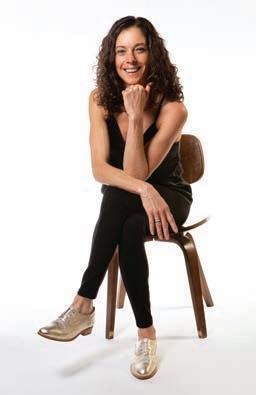

Real Life, Real Market, Real Results
We’ve
“To get that sort of outcome in such a di�cult market was truly remarkable and we couldn’t be
Prep, pricing, marketing…all the way through to close was handled with expertise and professionalism.”
– Seller’s testimonial ⭐


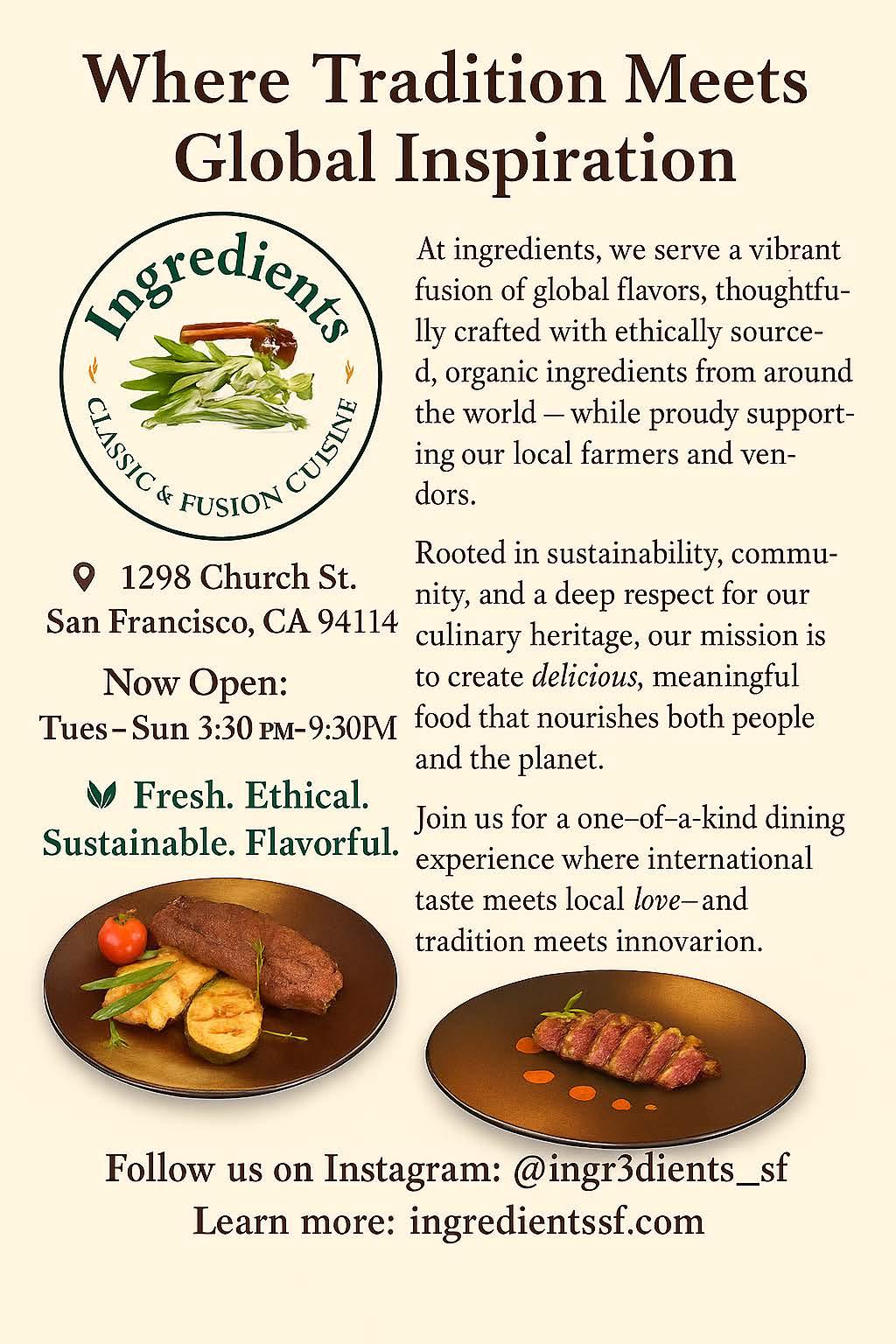
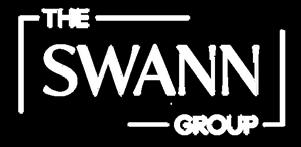











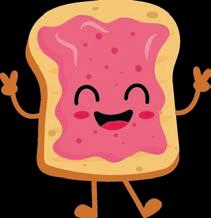
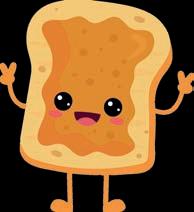
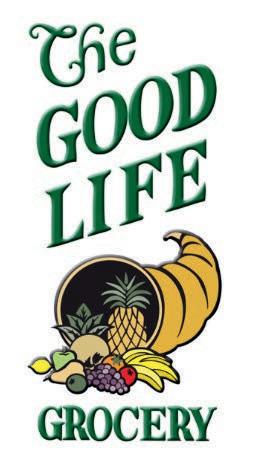
















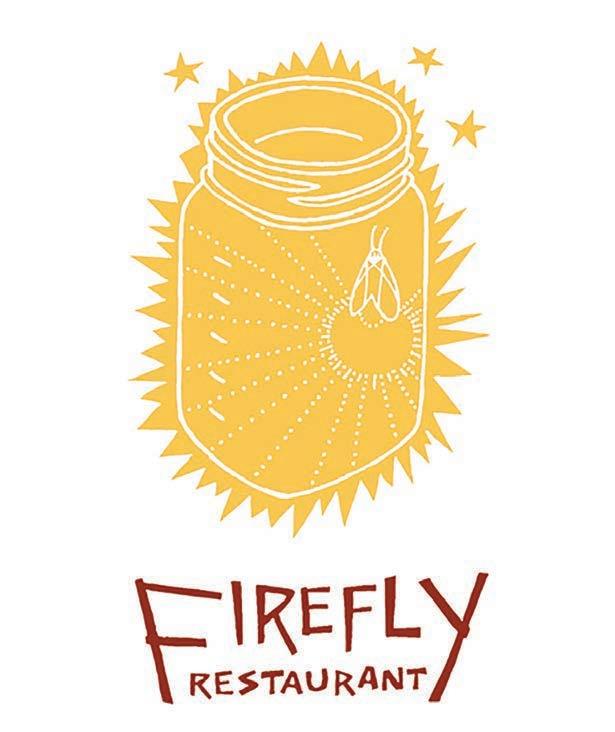

LETTERS 78 CENTS
Looking for a Place in Noe
Editor:
I am looking for a unit for 1-2 months in Noe Valley (or adjacent neighborhood). A studio/1 bedroom/inlaw unit with private entrance would all work.
I am a 67-year old semi-retired male. I lived in SF for 25 years, 6 of those in Noe Valley (which remains my favorite part of SF), before buying a home in West Portal. During that time I worked in venture capital, investment banking, and consulting. Today, I teach tech entrepreneurship at INSEAD (one of the world's leading business schools), record music (3 albums), write books (2), and publish essays on Substack (Postcards from a Runaway). I live in Aix-en-Provence, France and open to you enjoying my flat there as well (but not looking to complicate this situation.) My professional profile is on LinkedIn: Bill Magill.
I have 3 grown children in California and planning to spend much more time in SF, so this could become a more regular, periodic arrangement if you were open to that. I’m flexible, reliable, and just a really nice human being. I can be reached at sfenprovence@gmail.com.
Thanks, Bill Magill
Remembering Peter Gabel
Editor:
For nearly three years, a group of people who were lucky enough to know, work with, and be inspired by Peter Gabel have been working with the city to install a sidewalk plaque to honor Peter, a longtime community member who did so much to improve Noe Valley, the city, and society at large.
Throughout his life, Peter was determined to make the world a better place, which he did. As noted in Peter’s obituary, “In a long and fruitful career devot-
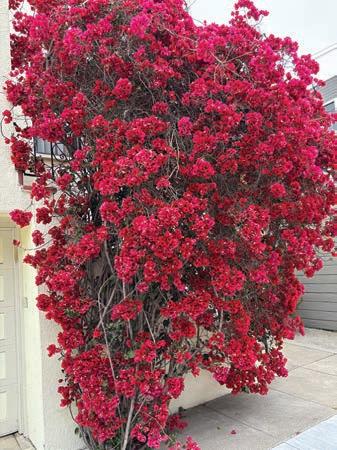
next Literary focused edition of the Noe Valley Voice will appear in January of 2026. Turning that corner will also bring us to our 49th year of publishing.
Whew! It’s been a long and sometimes strange trip. Thank you for your support, your criticism and suggestions and most of all for your participation. We’ve always been a publication about and for you. We’re proud to continue to contribute to this vibrant neighborhood and city.
Until next time, be well and happy.
ed to serving others, he was a college president, a law professor, a writer, and a dedicated community activist.” He had hundreds of friends and thousands of acquaintances. “He sought to make and maintain authentic rather than superficial connections with every single one of them, managing to find something uniquely wonderful in just about everyone he met.”
Peter died on Oct. 25, 2022, at the age of 75. While we grieved, immeasurably, Peter’s death, his spirit and legacy live on in Noe Valley.
The sidewalk plaque, the first of its kind in Noe Valley—there are similar sidewalk plaques on Castro Street—is a way to honor Peter, who co-founded the Noe Valley Farmers Market. We chose Labor Day weekend to celebrate the
taught in his classes, wrote in his many published essays, and lived in his every action and deed the importance of connection and community, “seeing” and greeting people attending our farmers market—one of the only markets in San Francisco that is run by the community, something Peter felt was essential in running a market dedicated to social justice—the placement of the plaque holds utmost importance.
This farmers market is special because of Peter’s leadership. He championed and led different initiatives to help people within and beyond the farmers market, including co-founding the James Lick Middle School Garden project, the Friends of the Children food donation program, the Curry Without Worry vendor that raised money to feed children, and other
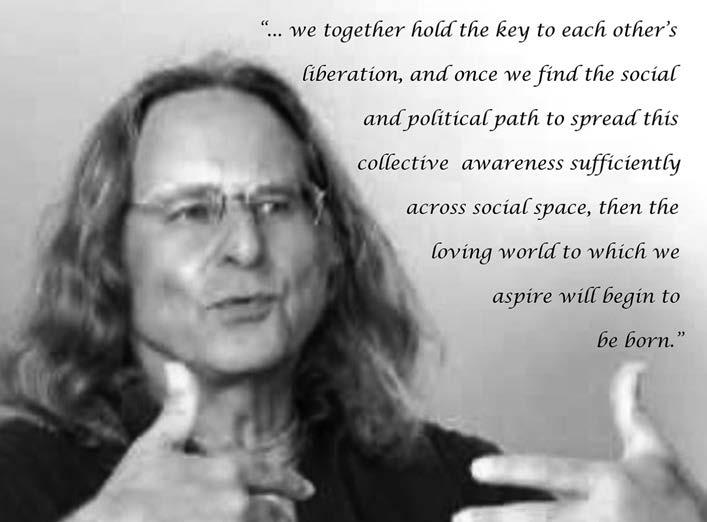
plaque (which is being installed on Wednesday, Aug. 27) since Labor Day weekend marks the 22nd anniversary of when many of you joined Peter in protesting the union-busting firing of the Real Food Company store workers and the subsequent creation of the Noe Valley Farmers Market.
The plaque will be placed in the exact spot where Peter stood every Saturday for nearly two decades to greet thousands of people entering the market. As Peter was someone who
social justice programs that were part of our market.
This is an open invitation for all to join us for a celebration and commemoration of Peter’s enormous contribution to Noe Valley. The short ceremony will take place on Saturday, Aug. 30, at 10 a.m. in front of the Noe Valley Farmers Market. There will be cake!
Leslie Crawford Noe Valley Farmers Market Co-Founde
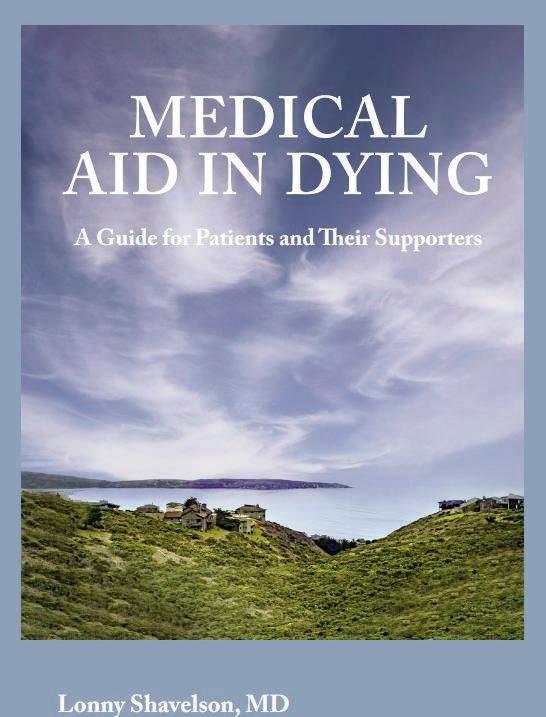
Our Loyal Subscriber and Guide
Editor:
I used to lead walking tours for City Guides & Noe Valley was my beat. Tours were on Sundays, so I could drive in from Tiburon & find parking relatively easily. In fact, I had the pleasure of meeting & hearing you & Sally over brunch at the home of Sue Walsh, head of our NV team back in the day. I just loved doing the Noe Valley tours, but I haven't gone back to it since Covid times. This is somewhat due to the increasing frailty of my Adored, who's ten years older than I am; Dick has taken to falling these days & I don't want to be away from him for hours at a time if I can help it.
Cathie & Paul Staley, who live on 23rd Street, are now doing Noe Valley tours for City Guides. I did go on one of their tours {incognito so as not to create a diversion); they tag-teamed the various spots & split up their patter in a most delightful way. I was impressed with the apparent health of their marriage. I do love my husband, but I can't imagine getting through something like this without landing a snark or two on him & vice versa. I actually learned quite a bit because they spent time on more current events & residents, whereas I tended to emphasize the history & the architecture.
I'm still subscribing to the Voice because I remain homesick for San Francisco, having lived there for 25 years. It's hard to complain about living in Tiburon, but I constantly look for reasons to come back across the GGB.
Thanks for all!
Best, Pamela Dekema

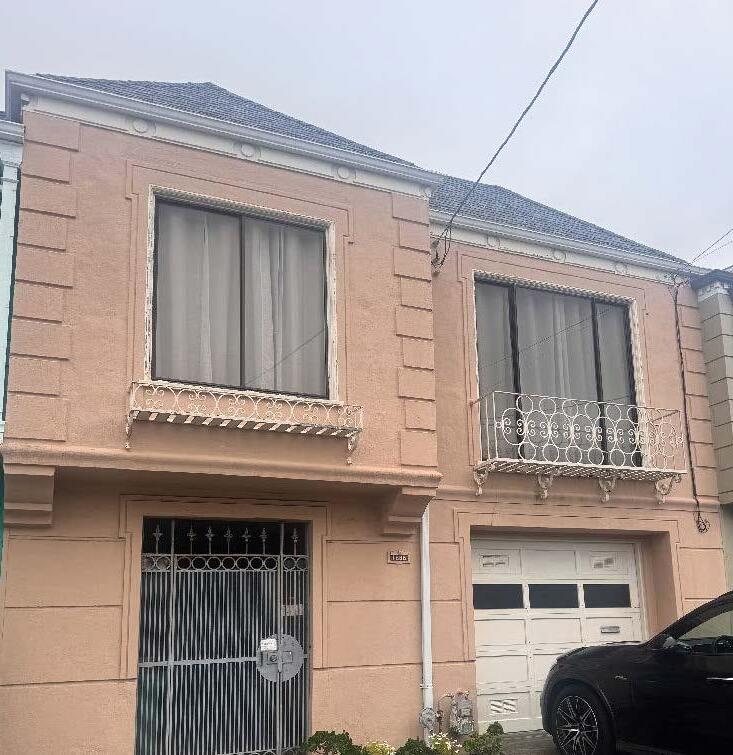
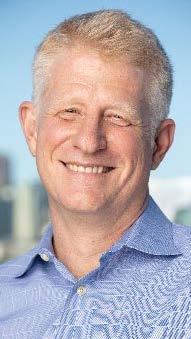
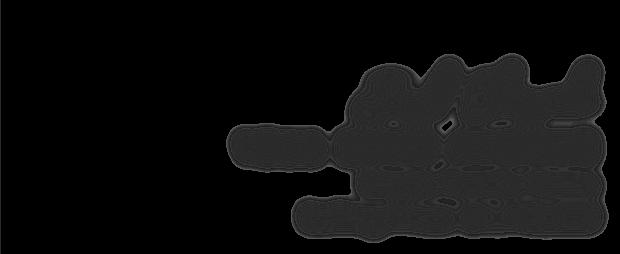
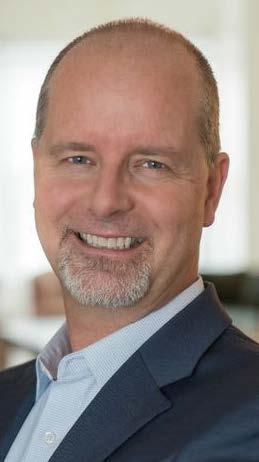
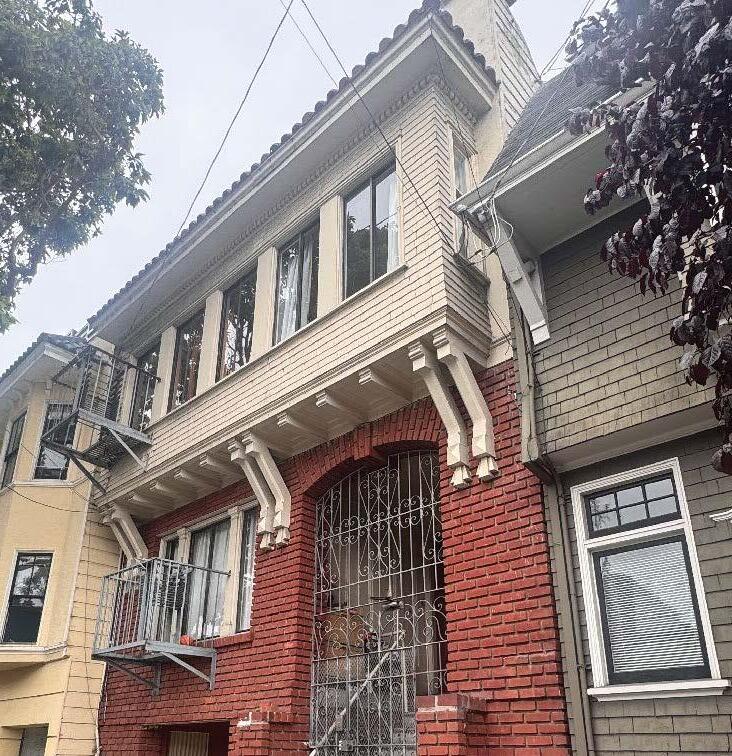

Buyers and Sellers. We have successfully navigated every kind of market in Noe Valley and beyond, and would be delighted to share our expertise with you! The Noe Valley market is red hot! Call us to discuss your needs.
Stefano DeZerega REALTOR® | LIC# 01730431 415.987.7833 | StefanoDeZerega.com sdezerega@corcoranicon.com
Hugh Groocock Broker Associate | LIC# 01209589 415.971.4414 | HughGroocock.com hugh@hughgroocock.com


A Pilgrim on the Path
I met a pilgrim on the path to the pier his shell hardened from life outside he will likely die before me but I will learn to carry his wisdom onto the heaving whale of a bus preparing for the final walk to the edge of the earth able to swim to the chant of beings speaking in tongues to become lone memories searching to unlock the secrets of longevity and serenity.
I witnessed an old blue Chevy convertible all fooo fraahh and zaah zoom spiriting past in the winter morning the old bald driver oblivious joyous inspite of the chill. I aspire to be him next time around.
For now I rick rack across town reacquainting with past selves feel ghosts in the back row of the Clay movie theater long boarded, thwarted. I walk past tomb stones of memory reimagining wishes drowning in pricey vinaigrette.
A mudpie-faced woman legs straight as straw thuds uphill past me then, a young couple holding hands his scowling homies across the way steeped in green.
This lost day following candy on the road
I encounter another woman her face makes the sign of the cross as we pass the Salvation Army.
My feet continue one in front of the other alongside a young man with cartoon yellow hair arm in arm with an older man in a long mink coat having a Bess Meyerson moment.
Sometimes when the weather is mild even in winter
I can hear an airplane slow skating through bland blue sky, absent clouds.
It takes my breath, my attention for just an instant.
I pass other pilgrims, a woman too glamorous for this hood back clad, walking her tiny ginger color pup past a gaggle of guys winding down from last night’s inebriety. I open-face smile and thread through them all loud talking.
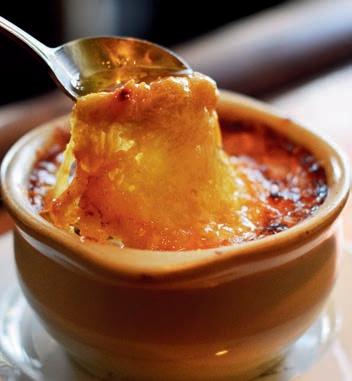
I am stealing time from myself chasing the fragrance of memory respite from nagging must-dos. I’m not even tempted to schuss into Burger King this one serves loneliness and no taste ice cream.
I still feel uncomfortable in that parking lot where we had the beginning of a fight.
I still see the back of your yellow jacket as you walked away from me to a place beyond pain.
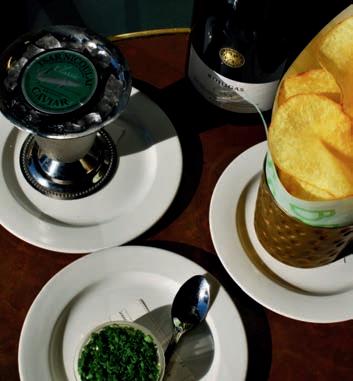

SINCE 1998, ABSINTHE HAS BEEN SERVING FRENCH BISTRO FAVORITES AND ICONIC COCKTAILS IN HAYES VALLEY, UNDER THE ABSINTHE GROUP. OWNED AND OPERATED BY NOE VALLEY RESIDENTS OF 50 YEARS—COME SEE WHAT WE’VE BEEN COOKING UP.
398 Hayes St @ Gough St | absinthe.com
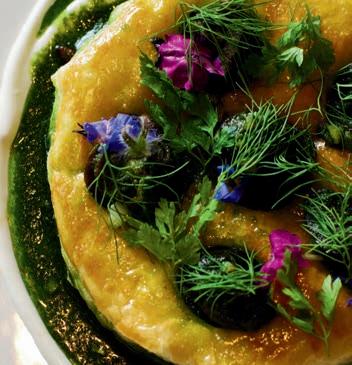
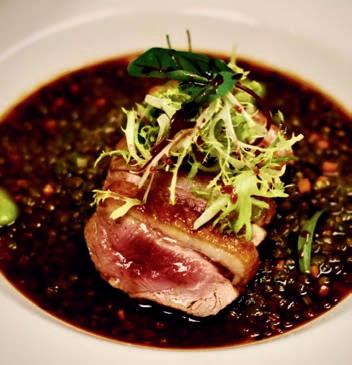
Just A Minute Left
If there was just a minute left to say what’s worth being alive it would be simple things. Remembering way back before I even went to school home with my mother me playing, she taking a nap I carving Ivory soap bars til it made me sick
her making Campbell’s tomato soup with torn bits of buttered bread floating on top.
Going out Friday nights with girlfriends
cause none of us had dates, eating greasy fries acquiring a taste for coffee and cigarettes being loud, so silly.
Moving out later to rented rooms with a cacophony of housemates house meetings bummed they didn’t get I put the spices in alphabetical order they bummed I took all the kitchen chairs for play rehearsal in the living room.
How exhilarating just to sit around sit around, drinking wine, playing music, so loud dancing, getting a job, a paycheck writing poetry on the sneak instead of collating oogobs of paper dreaming about what to do when the day was mine again. Riding the bus in the rain wearing a yellow slicker and just being able to sit down.
More school getting a real job feeling good about doing something.
Cleaning house, zapping up dust and discord opening all the windows to let out smoke and the dregs of hurrying around.
Grace D’Anca’s poetry has been featured in the Noe Valley Voice, Raquet Journal, Community Living Campaign, Elder Litquake and OWL (Older Writers Lab) anthologies; and featured in Deborah Slater Dance Theater’s In The Presence of Absence. She is also a member of Cosmic Elders and Drama With Friends theater ensembles, and Dance Generators inter-age workshop.

Clean sheets, new towels, holding hands fall plaids in store windows, Snickers candy bars cakes with butter cream frosting margaritas before noon not asking to sit by the window just doing it.
Living through my mother dying going into cold cubby holes unwrapping memories thinking what to do with what my mother saved finding my old doll cradle wondering which neighbors to call to say goodbye, wondering who will tell the others and who will bring the cakes
A SAN FRANCISCO CLASSIC, WITH NOE VALLEY ORIGINS

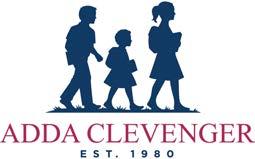
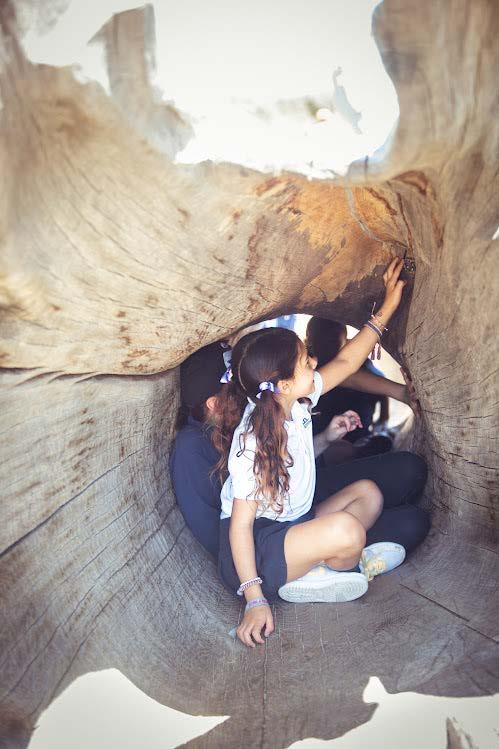

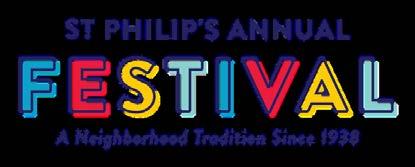
borcelle
• Sieu Sean Do • From A Cloak of Good Fortune
A Cambodian boy’s journey from paradise through a kingdom of terror.
Cassava Scraps
During the monsoon season, my friend Tang Su-Weng whispered that some original villagers had just harvested their cassava field. He suggested we sneak in and look for leftover scraps. Hungry and hopeful, we darted into the forest.
At the edge of a clearing, an old man in black sat smoking under a tamarind tree. I politely asked, “Pou, may we collect leftover cassavas?” He eyed us warily, nodded, then walked off. We stepped into the field, scanning the dirt for scraps. I dug quickly, but when I looked up, Su-Weng had vanished. Suddenly, a soldier in black shouted, “Thief! Stop or I’ll shoot!” Gunshots rang out. I sprinted; cassavas clutched to my chest. Bullets tore through the air. I tripped, spilling the roots, then scrambled into the dense forest.
Hidden behind a massive tree, I gasped for breath, my body trembling. Then—Bang! Bang!—more shots echoed through the jungle. I froze, bracing for death. After the footsteps faded, I slid to the ground, exhausted and sore.
Something tickled my neck. Fire ants! I yanked off my shirt and shook them loose. Drenched in fear and sweat, I stumbled until I recognized a familiar path. But just before the village, another Khmer Rouge soldier appeared and raised his rifle. I started zigzagging in case he opened fire, and darted into our cottage, where Grandpa was napping.
I tore off my striped shirt, threw on a dark green one, and dashed out the front. I ran until I reached a flooded patch of jungle. The river had swallowed the path. I waded in, searching for trees to climb—
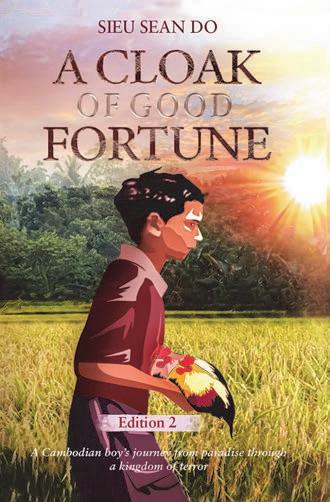
but the ones nearby were too deep. I couldn’t swim. Desperate, I held onto reeds and slid into the water, barely keeping my nose above the surface. Rats scattered around me. I lost my grip and sank.
I woke to coughing and water gushing from my lungs. Su-Weng’s older brother had saved me.
“You’re lucky I found you,” he scolded. “You could’ve drowned.”
When I finally got home, it was already dark, shivering and soaked, Grandpa told me that Khmer Rouge soldiers had ordered the entire village to an urgent meeting. He warned me not to go, but I had to see for myself.
I arrived to find a crowd encircling a giant campfire. My heart dropped, Papa and Brother Chen stood near the flames, faces flushed red. A soldier stood pointing his rifle at them. It was the same one who had chased me.
Brother Chen’s arms were tied. Papa knelt and pleaded, “Please give my son a chance. He won’t steal again.”
“Silence!” barked the commander. I realized with horror that
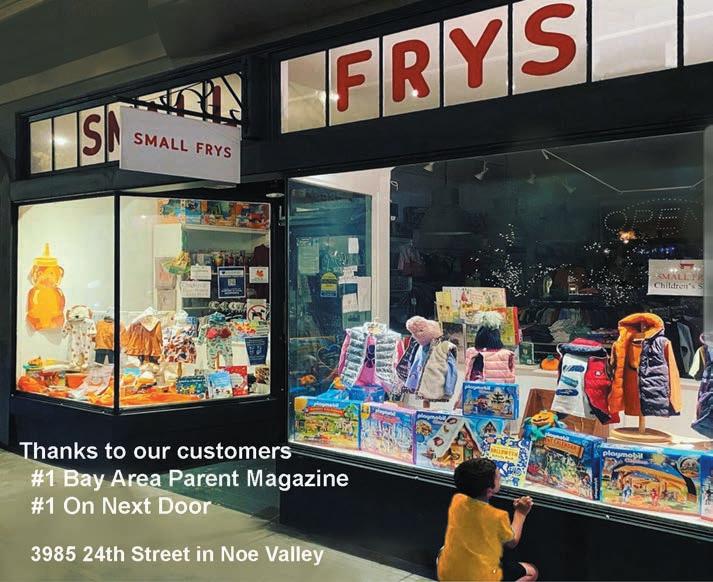
Chen was wearing a shirt identical to mine. The soldier had mistaken him for me.
Mama ran forward, begging for mercy, “He’s just a child!”
After a long pause, the commander forced them to stand before the crowd and swear, “If you steal, you will be shot to death.”
I slipped away and sobbed alone in the yard. When the family returned, Papa exploded. “Where have you been? Chen said he didn’t do it! I’ll beat you to death if you don’t stop stealing!”
“But, Papa—” I tried to explain.
“I don’t want to hear it,” he snapped.
Grandpa calmly intervened. “Don’t be too hard on the boy. He’s the one who brings back most of our food.”
Papa’s face crumpled. He broke into tears and whispered, “I just don’t know what to do.”
It was the first time I saw my father cry.
Later that night, we ate in silence—field crab soup with banana trunk.
At dawn, Mama told us about a dream. A man in black had crawled
beneath our cottage and listened to our conversations. She took it as a warning and begged us to be careful.
As we prepared to leave for the day’s labor, no one spoke. By then, we all learned that talking could get you killed.
Sieu Sean Do is a survivor of the Khmer Rouge genocide and the war between Cambodia and Vietnam that raged in Southeast Asia from 1975 through1978. He has served as a victim witness investigator in a law enforcement agency in California for over two decades fighting against elder abuse and consumer fraud. He lives in San Francisco.
Excerpt published with author’s permission from A CLOAK OF GOOD FORTUNE (Hibiscus Press: 2019)
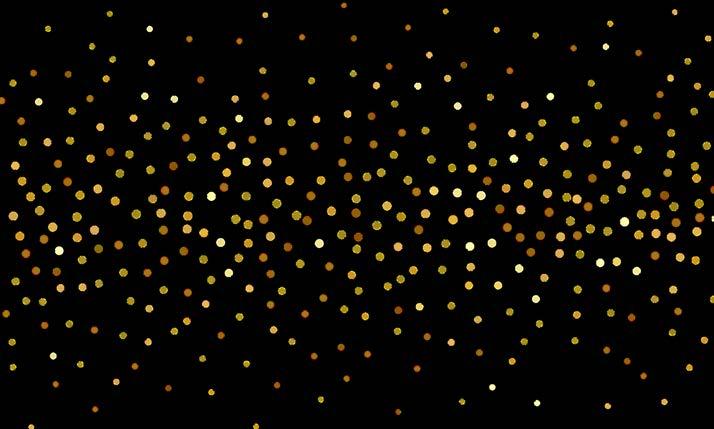
BRUINS BACKROOM
ST. PHILIP SCHOOL | 2025 SPRING AUCTION

















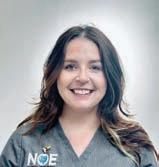
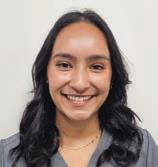
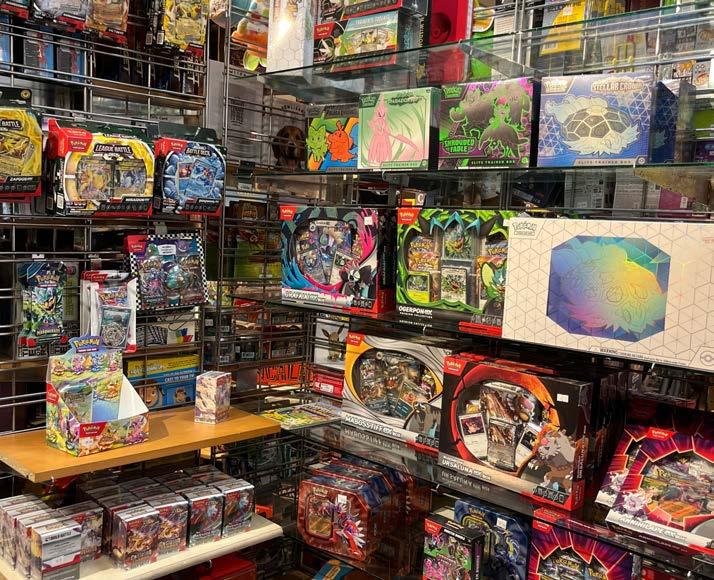
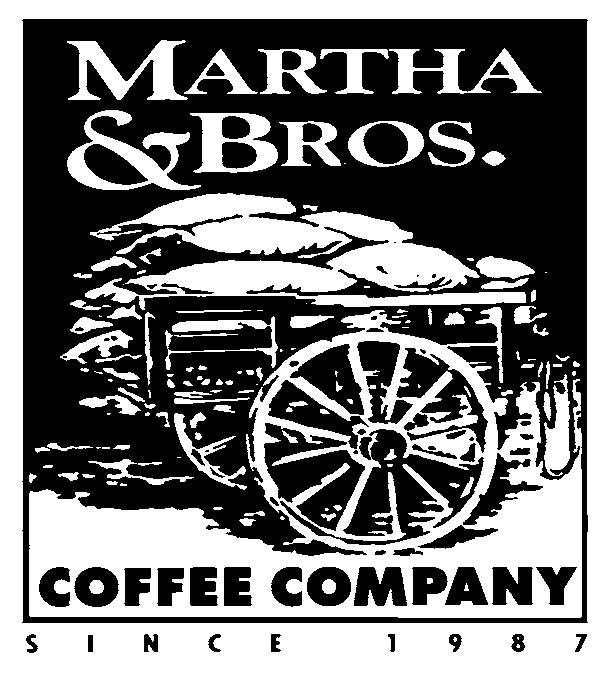
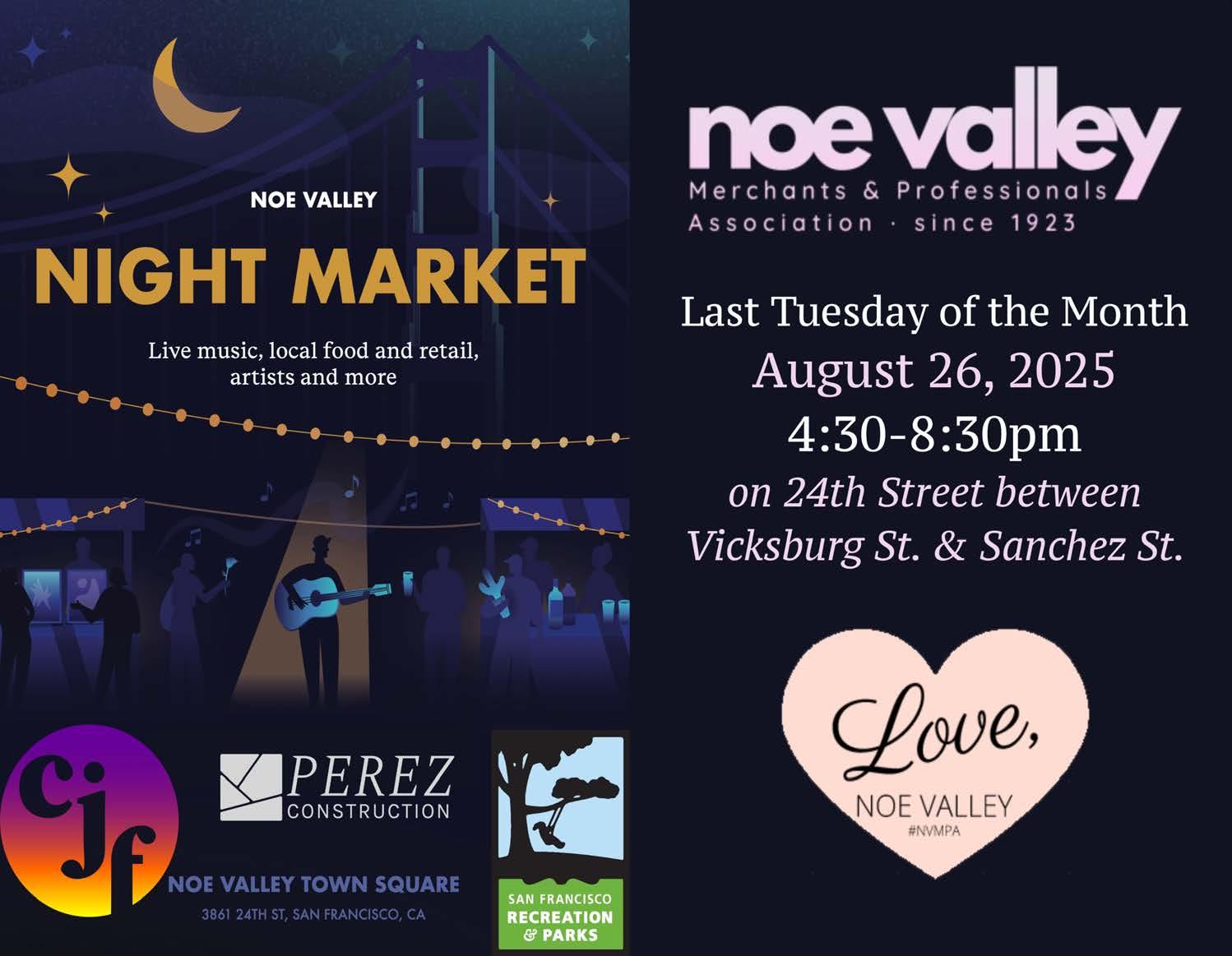
Betty White, the “First Lady of Television”
I just make it my business to get along with people so I can have fun. It’s that simple.
Betty White
Most of us remember Betty White for her roles in TV sitcoms, which were a big part of her career. But by the time she played Sue Ann on “The Mary Tyler Show” she already had three decades of experience in radio and television.
“I’ve been working steady for 63 years,” she said in an interview in 2010, which puts her longevity in perspective. The key to her long and accomplished career? She once answered that question this way: "How lucky can an old broad be?”
But it wasn’t all luck, and it wasn’t easy. She was told she wasn’t photogenic enough for movies … that she would have to give up her career when she married … that she was too old to be relevant. But she kept at it, and she kept coming back – each time more experienced, more determined, and more successful.
Betty Marion White was born in Oak Park, Illinois January 17, 1922, the only child of devoted parents, Horace and Tess White. She loved movies and movie stars, developed an interest in acting, and wrote plays to perform at school. Her career started with small parts in plays, TV ads, and modeling, and it was her intention to work her way into movies. When she was told she wasn’t “photogenetic enough” she switched to radio, established a reputation, and found her way back to TV, starring in a series called “Hollywood on Television” and later "The Betty White Show". When sitcom work dried up, she stayed relevant by appearing on talk shows and game shows. She
married Allen Ludden, the host of “Password” in 1963, who turned out to be the love of her life. White’s TV career took off again in
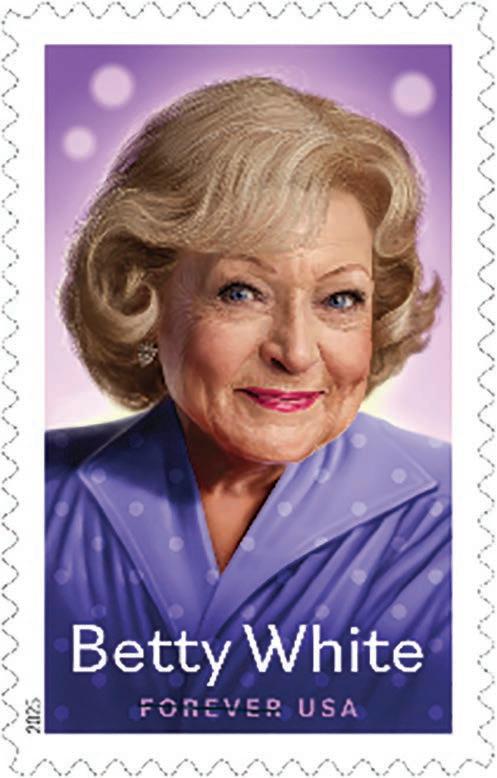
the 1970s when she played sweet but cynical Sue Ann Nivens on "The Mary Tyler Moore Show", and in the 1980s she gained even more popularity for her role as ditzy Rose Nylund on “The Golden Girls”. She reprised that role for a short-lived spinoff, “The Golden Palace”, and then played a feisty caretaker in the TV series "Hot in Cleveland". She continued into her late 80s, appearing on talk shows, in a SuperBowl TV ad (for Snickers), and hosting “Saturday Night Live”.
While not generally remembered for her work in film, she appeared in more than 60 movies, including “Advise & Consent (1962), “The Story of Us” (1999), “The Proposal” (2009), and “The Lost Valentine” (2011). Along the way, Betty collected five Primetime Emmys, a Daytime Emmy, a lifetime achievement Daytime Emmy, induction into the Television Academy Hall of Fame (1995), and a lifetime achievement award by the Screen Actors Guild in 2010. She was certified by the “Guiness World Records” as hav-

ing the longest career by a female entertainer.
Besides her extensive work in television, Betty White is also remembered for her interest in animal welfare. She devoted a great deal of time and money to organizations like the Morris Animal Foundation, American Humane Society, the Los Angeles Zoo, Monterey Bay Aquarium, and the Fund for Animals. She also took in and cared for numerous mistreated animals, especially dogs.
###
Betty White achieved many things in her very active and full life, but perhaps her favorite achievement was when she became an honorary forest ranger. She had wonderful memories of childhood vacations with her parents, riding horseback into the High Sierras, where they went for days "without seeing another twolegged soul." Her time in the wilderness made her want to become a forest ranger. But back then, women were not allowed.
Now fast-forward to 2010 at a special ceremony for Betty White at the Kennedy Center for the Performing Arts. There, surrounded by uniformed forest rangers and a 7-foot-tall Smokey the Bear mascot, 88-year-old Betty was given a
large-brimmed Forest Ranger hat and a Smokey the Bear doll and made an honorary United States Forest Ranger.
"I was so pleased to look out and see all those women in their ranger uniforms," White said. “My parents would be prouder of this than of any other award I have won."
On March 27, 2025, the United States Postal Service honored Betty White, the “First Lady of Television”, by issuing a Forever stamp that features her portrait against a violet-colored background and, in a lighter shade, bubbly spots that befit her sparkling personality.
Dale Fehringer is a longtime resident of Noe Valley. He's also a writer, and has published books about notable people of San Francisco, "good" people, and travel adventures. He recently published a book for children and meandered in the world of fiction writing a book about a driverless taxi. He lives on Jersey Street with his wife, Patty, and cats, George and Gracie. He can be reached at dalefehringer@hotmail.com
Z ARÉ M EDICAL
Where Health is Restored
To look and feel your best, the expert services of Zaré Medical can provide you with the lasting results you’ve been looking for.
Get in touch with Dr. Sara Zaré today and make this Holiday Season your time to shine! Phone 415.766.7266 or use the contact form at zaremedicalsf.com
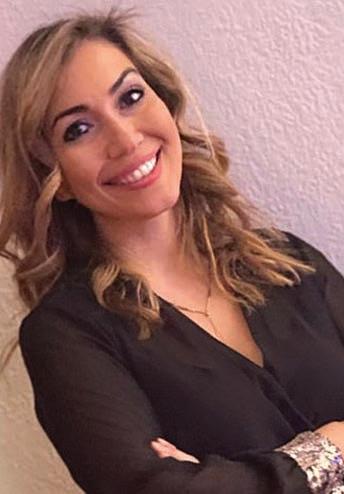
Dr. Sara Zaré, ND
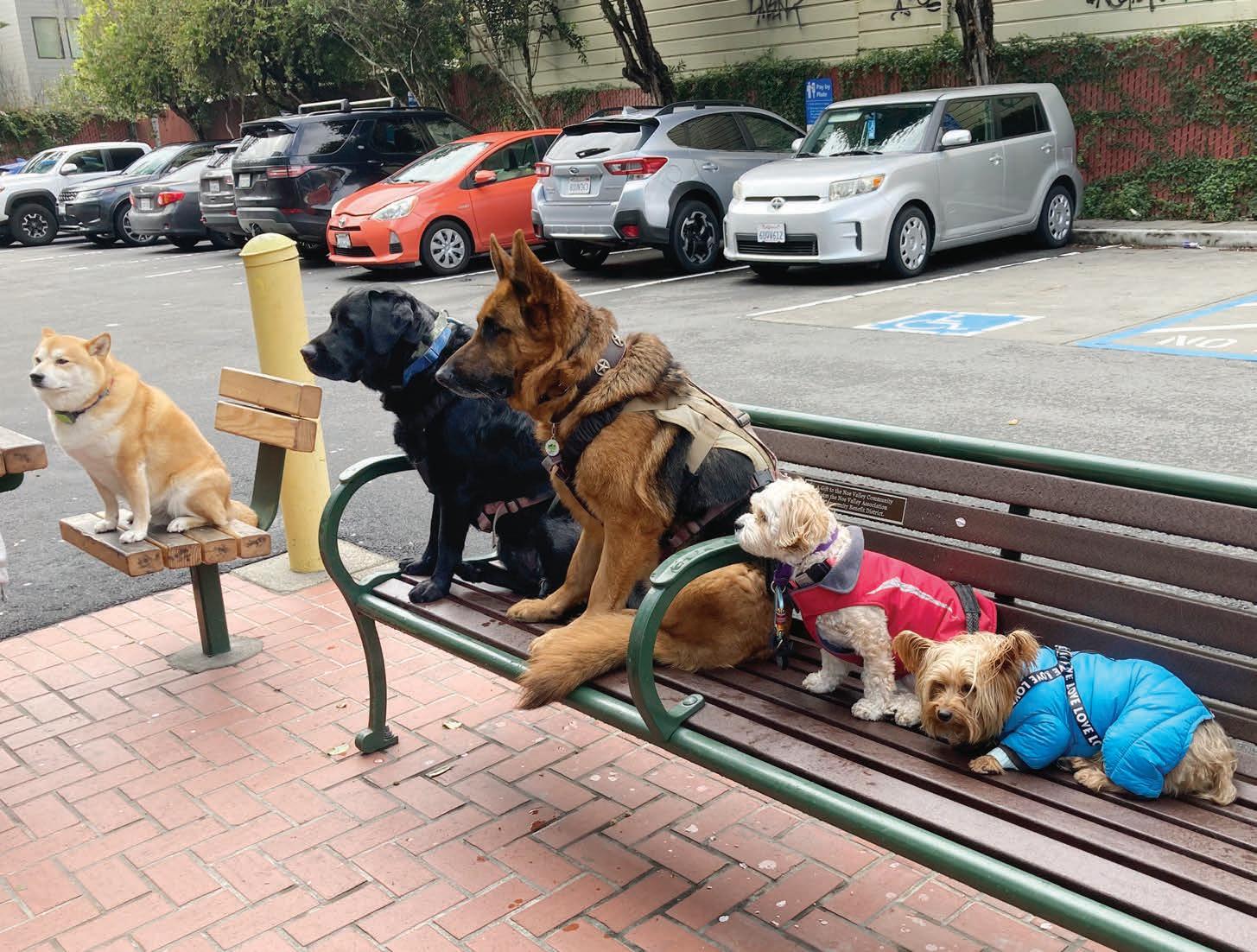
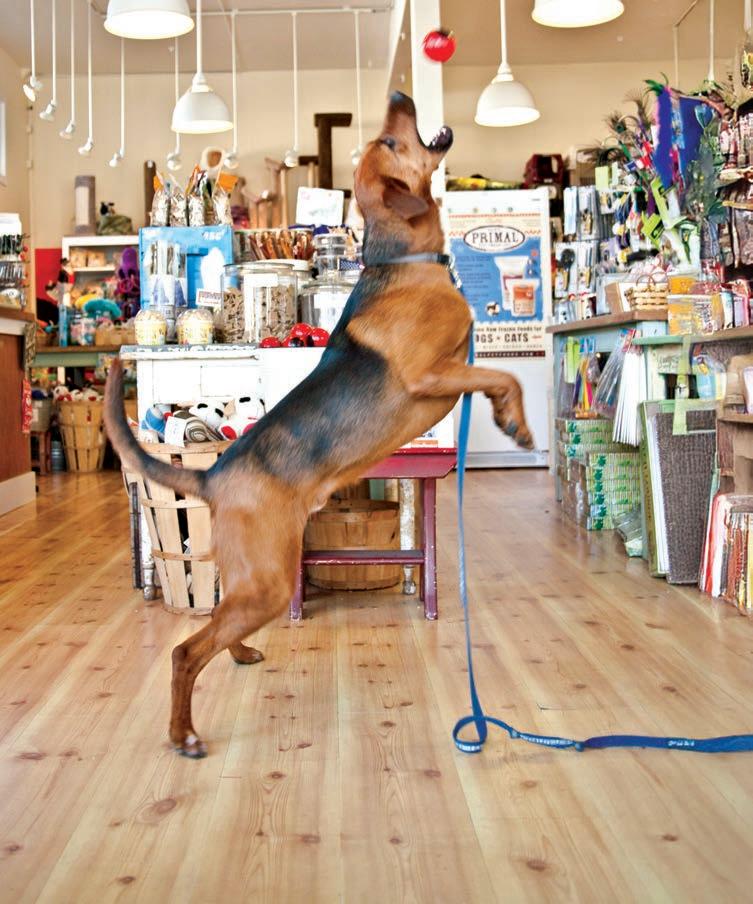

Photo: Amanda Brauning
Canine Break Time
Photo by Jack Tipple
Class Clown
I don’t know why they did it. Did they think it would help to mainstream me into a public school? I knew my parents loved me, but it was like throwing me in the middle of a pack of hungry wolves with hot dogs hanging around my neck! Being a minority is a lonely and often traumatizing experience, and being the son of a clown was definitely in the extreme. I looked just like my dad, big red nose, neon orange hair, and on top of that my parents made me wear the traditional clothes of our people. Their theory was that I was to be myself and by doing that I would become stronger. Kind of like a boy named Sue, as Johnny Cash prophetically wrote.
Our work prospects are cruelly limited to only certain jobs. We are only allowed to be entertainers in the circus, at kids’ birthday parties, or rodeo clowns who are at least well respected since they are willing to risk their lives to earn the respect of the audience. It is true that you can become a doctor, but only if you choose pediatrics and utilize your God given clown skills to get your little patients’ trust in the form of the distraction of laughter. At the top of the list of course, are the Cirque de Soleil group, but they are essentially clown pretender snobs who have stolen the skills and secrets of our close knit society and because they are just regular people without their makeup and costumes, they have universal acceptance.
Of course our interracial marriages and romances are fraught with complexities. Since women cannot be genetically born as clowns, it takes a very special group of females attracted to clowns, or cloopies (clown
groupies), looking for the sexual thrill of the big foot, big hands stereotype so often portrayed of our people. My wife Sheena is the
behavior put us in a separate, protected class….that is until we became the scapegoat.
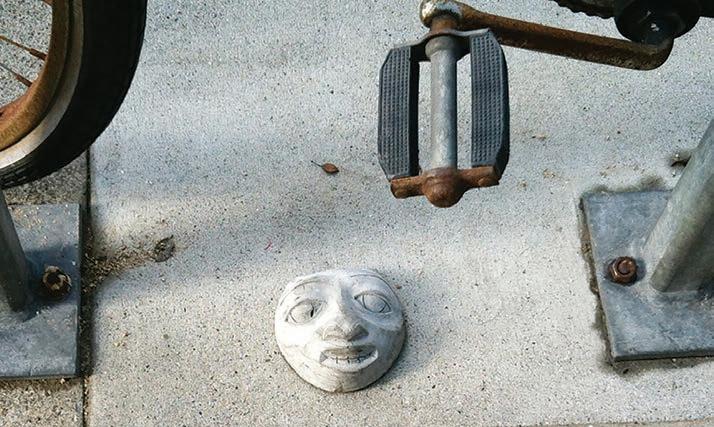
joy of my life, and although we can have children, all girls are genetically programmed to be ‘normal,’ but the sons have a 50% chance of either being born ‘normal’ or as clowns. When our son was born I decided to name him BOZO Jr., after me. It is a traditional, honorable name of which I believe he should be proud. All males must be dressed, by law, in large, loud and extreme striped and patterned clothing, (what - like someone is going to not notice the nose?) Naming him BOZO was a small jab of defiance. Our dream for him of course is to be accepted at Indiana University of Clown Science, Bloomington, which is the most prestigious of them all.
Given its noble history going back as far as the Egyptians, Aztecs, and through all the courts of Europe, the jester, or as is colloquially known, clowns, were regarded as a symbol of common sense, honesty, insight and advice. As Shakespeare said, jesters are “wise enough to play the fool.” They could mock and revile even the most prominent without penalty. Only the jester could give bad news to the King that nobody else would dare deliver! Somehow our looks and
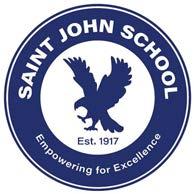
and 7-8
Website: https://stjohnseagles.com
Phone: (415) 584-8383
Email: officesj@stjohnseagles.com
The tables always turn, don’t they? For decades we’ve been mocked in movies and presented as psychopaths. We’ve been segregated from the main population as we are only allowed to travel in clown cars. What does society expect to happen when they malign a targeted group unrelentingly? We ourselves cringe when we hear about the rash of creepy clowns that are said to try to lure women and children into the woods, chase people with knives and machetes, and are spotted in cemeteries. I’ve taught my little BOZO that he will have to act even better than the best of
the mainstream in order to just survive. Follow the basic rules! Always use your words, and never try to spray seltzer down the pants of a hulking tattooed stranger. People are afraid of us because from the way we look they can’t see what we are thinking! Never forget that like all segments of society, there are bad clowns out there, many of them politicians trying to pass.
I leave my son with this credo to guide and inspire him – “They laughed at Galileo, they laughed at Newton. But they also laughed at BOZO the Clown!” (Carl Sagan)
Be proud son. Be a Class Clown.
Dale Fehringer As a writer and an artist, it is all about my fascination with irony. I have a published book entitled KARMAGEDDON, Mostly True Short Stories. My work as an artist has been shown extensively nationally.
I’m a New York transplant and have been here 57 years! I’m a devoted Noe Valley-ite living on Church Street. We New Yorkers make the best San Franciscans.
The next issue of the Noe Valley Voice to feature your creative work will be published in January, 2026
Keep those pencils sharp.
Limit: 750 words
Deadline: December 15, 2025
Thank You! Email editor@noevalleyvoice.com
The Best Summer Ever
I was 15 and my sister was 22 and she was having a big wedding, lots of bridesmaids and a fancy reception at a country club. Well, it was a Boat Club really on Belle Isle, a recreational island in the middle of the Detroit river, pretty nice though.
It had a ballroom, and fancy food and an open bar. My Dad made a big deal about that cause people could order cocktails, not just beer and wine, and that can get expensive. There was dancing too with a live band and champagne, my first glass of champagne.
It was a beautiful summer evening and I was sitting outside on the balcony with my best friend, Carol, and probably some guy, and we were drinking champagne. The giant neon Stroh’s beer sign across the river seemed to become more than one sign and the signs were floating towards us on the waves. I thought the whole summer was sort of crazy like that, so much was happening.
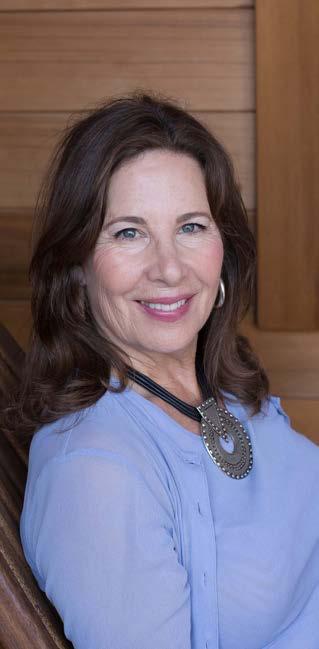
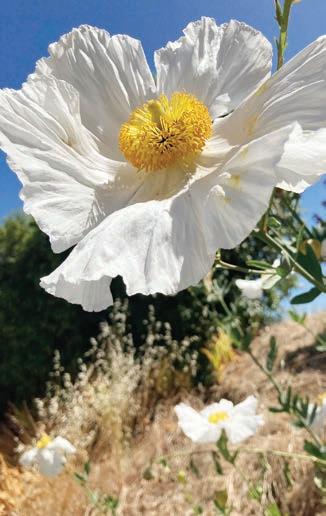
First of all, Carol’s father got sick, which was horrible but no real surprise, because he did not take care of himself, always smoking and drinking and scaring everybody with his stony face stares.
Then my mother fell down getting into our boat, nice little Chris Craft cruiser, and was laid up in bed with this horrible gash in her leg, and what with all the wedding preparations to do.
Claudia Siegel is such a professional and she excelled in every aspect of our sale.
Claudia has an established business relationship with a remarkable list of service vendors. She excelled in making our property market ready on a tight timeline.
From listing through closing, our process took less than five weeks and produced three offers above asking price. Claudia's magic is her experience marketing high-end real estate, her constant attention to every detail, and her unwavering pleasant can do attitude. Yes, do hire her! -Glenn M.

The doctor came to look at it and said to my Dad: “Well, it’s infected. It will either go down and she’ll be fine or it will go up and she’ll be dead. In the meantime, we might as well play a few hands of bridge.” So they did. That sounded bad for her but she was okay and for me it meant a lot more freedom to get on my bike and ride.
Nannie, that’s my grandmother, kept trying to invite all the neighbors in to see the wedding gifts, so my parents were sure we’d be robbed. Later that summer, I had my first kiss. It didn’t go anywhere, just a poolside romance but that was fine with me. He was so cute and it was a hot summer all right.
My sister’s wedding almost broke up the whole family with all the fighting that went on between everybody, including the aunts and uncles and cousins, some of them I hardly knew. It’s amazing we all made it down the aisle looking sharp – me, the maid of honor, Dad arm in arm with the beautiful bride,
Mom beaming in the front row. Then Sis left home and I moved
into her big beautiful room. Nannie settled down and resumed sitting on the front porch keeping track of all the “goings on” in the neighborhood while pretending to read the newspaper. Dad went back to being Captain of his boat. He made me promise not to have a big wedding. Said he would buy me a car instead. And that’s how I eventually made it to California.
It really was the best summer ever.
Mercilee Jenkins is a playwright, performance artist and poet. Her recent work has been presented in San Francisco at Lit Crawl, 3Girls Theatre, Stage Werx, CounterPulse, The Marsh and Piano Fight.
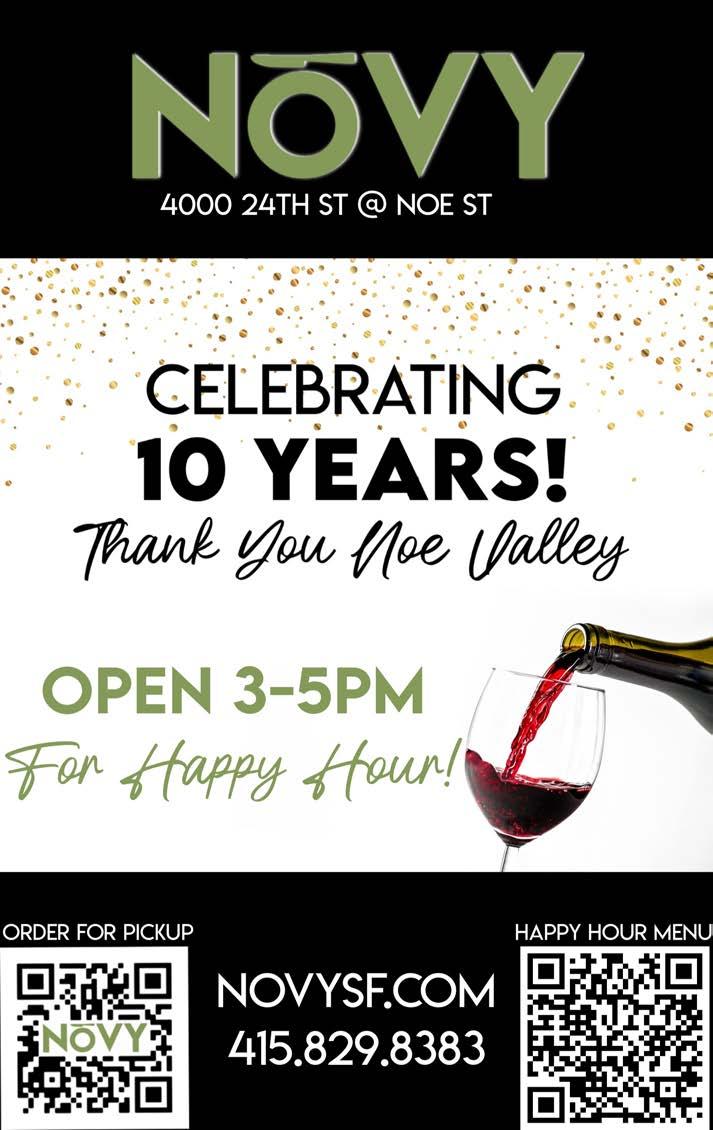
• Jeff Kaliss •
Audience for a Requiem
Do the dead want our silence?
We might wish them still sounding, laughing above the cellos, their fleshed smiles opening to speech, how being is a delicate recognition, said, seen, shared as we still stand, good what we get for whom we think we might perform for.
Hear how we living work words from the wind within us!
Here is a shadowed rest for our breaths, moving with music, made to live inside and out, so we are found, timeless together through our testimony, requiem and aspiration hung up in time, on time.
Listening we look on through time, beyond our own reflection.
Was this how mother looked on our beginnings, how she shaped us, felt us for how love is learned?
Now and here we are, mother, our pets the lambs of god, felt by us and fostered, the lamb’s god nuzzled and nurtured by us, watered by our hearts.
Jeff Kaliss is a national prize-winning music journalist, author, and poet, He is widely published, including in the Noe Valley Voice.
Returning Home
My eyes swivel from left to left to right from ocean where the sun pushes each glittering wave back to us to the brown hills with sparse green tufts my eyes Will never forget this scene.
Mark Thoma
Ebeltoft, DK
In the distance on a dock in slippers and robes dropped at the jump white heads flicker an instant above the sea and old bodies splash before the sound.
Rhapsody after Homer
Stitch then stitch again the epic of you not the one you thought you composed all by your proud self but the one of tripped up timing stashed away under your life.
Mark Thoma’s short fiction, flash memoir, and poetry have appeared in journals and anthologies such as the Marin Poetry Center Anthology, Vistas & Byways, the Noe Valley Voice, Green Prints, Front Range Review, The RavensPerch, and XY Files: Poems on the Male Experience. His work as a medical social worker and a love of nature informs much of his writing. Mark lives in the Castro.
• Eveline L. Kanes •
What the World Sees
Here a woman’s shoe over there a child’s wooly hat where are their owners now ? long lines of people trudging through snow mile after mile some with babies in their arms their destination shelter without bombs.
IIn 2015 the Noe Valley Voice published a few poems from Eveline L. Kanes first book A Coin Worn Thin. Her second book, Traveling Through was published in 2020. Both books were published by Finishing Line Press. She now has a new manuscript.
• Daniel C. Murphy •
What Are The Odds?
Let’s take a trip back to the year 1955. Although sports betting was illegal in California, it did a thriving underground business. Betting was supported by off-track tipsters, local bookies and barroom touts.
Compared to today, sports-betting in 1955 was bush league, but it’s interesting to recall those earlier times.
I was a sophomore at Saint Mary’s College. I had a short story due in a few weeks, and was trying to think of a plot, when my friend Gallagher came into my dorm room.
Gallagher fancied himself an expert on calculating odds for college football games. It was a sure thing that Stanford would beat Cal in the Big Game, but by how many points? That was the question. The point spread was the equalizer, making every choice a fifty-fifty guess for the gambler.
“We can make big money by booking bets for college football games,” Gallagher said. “Our football cards will list the fifteen important college games of the week. The grand prize will be $150 if a player correctly picks the winner of all fifteen games. We can sell the cards for $5.”
“$150 jackpot! That’s too big a risk,” I said.
“No risk. We aren’t going to lose,” said Gallagher. “I will set the point spread for each game, so that the teams will be evenly matched. No one can pick fifteen winners when there is a point spread making all chances equal. You can’t flip a dime fifteen times and have it come up ‘heads’ every time.”
“We will sell our cards here on campus. You can go down to your uncle’s steel plant in Emeryville and sell cards to the iron workers.”
My uncle owned the steel fabrication plant in Emeryville called Judson Pacific-Murphy. His plant constructed bridges like the Richmond-San Rafael and the Coronado in San Diego.
Judson Pacific-Murphy was located on Highway 80 in Emeryville on the property which Ikea now owns.
I worked summers there and visited the plant often during the school year. I knew many of the iron workers and factory hands who did the heavy work of steel fabrication: welding, riveting, grind-
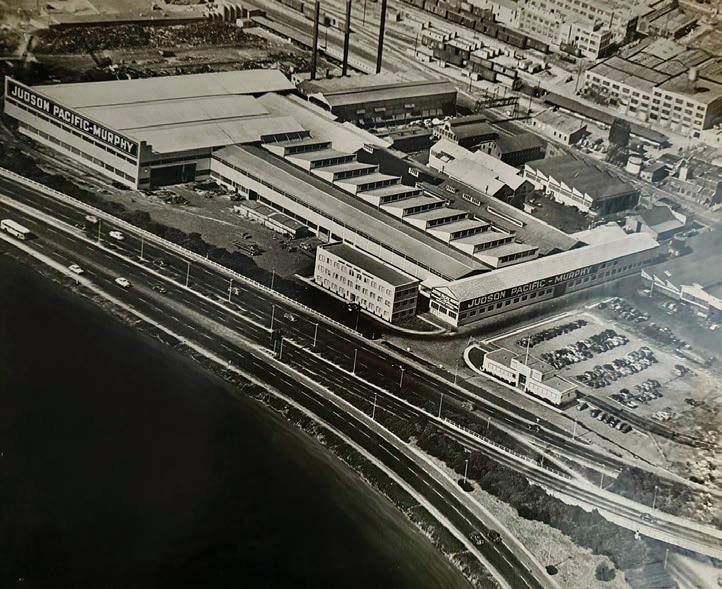
ing, and transporting the finished steel to the proposed bridge site.
The superintendent agreed that I could sell our football cards to the shop workers. But with one warning: Don’t get involved with Jersey Jack, the welder.
As his name suggested, Jersey was from the East Coast. It was widely believed that he had mafia connections.
Actually, I was a close friend of Jersey’s. Intelligent, private, reserved with other workers, I knew Jersey liked talking with me; maybe because I was a college boy, while he was smart enough to qualify for the faculty.
I proudly showed Jersey our first football card. I could see he was not impressed. “I’ll study it,” he said.
A few weeks later, Jersey asked if we had the money to cover a $150 jackpot. This was an uncomfortable question, because we spent the $5 bets as fast as they came in.
The next week, Jersey again asked, “Has anyone won the $150 prize?” When I told him that there were no winners, he said “You guys have been lucky. Last night I telephoned my friend Harry. He’s a bookie in Vegas. Harry says that you will lose big time this week. Your point spreads are completely wrong on every game. You should cancel this week’s cards, return the bets, and get out of the gambling business.”
“I’m telling you this because I like you,” Jersey said. “I don’t want to see you get into a bad, financial jam.”
Jersey’s warning came as no surprise, because I was already wor-
ried. Gallagher was worried too when I told him what Jersey had predicted.
Gallagher thought for a minute, then said, “If the advice comes from Jersey, it’s good advice.”
We cancelled all bets, and returned the money to every player before the start of that week’s football games.
But on Monday, Gallagher had another scheme, “Let’s skip school tomorrow and drive up to Reno.
I have a theory on how to win bigtime at the blackjack tables.” I knew that the character and plot I had been searching for had just walked into my room.
“I won’t be able to go to Reno,” I said. “I’ll be working on my short story.”
Daniel Murphy is a retired trial attorney. He was the head of the SF Legal Office for the State Department of Transportation when he retired.
Editor's note: Murphy has informed the editors that his wife Lloyda, a figure in many of his stories, passed away in late June. The two met at St. Mary's College in 1955 at the time portrayed in the above story. They had been lovers
Join Us to Celebrate the Peter Gabel Plaque Installation!
Thanks to the generous contributions from the Noe Valley community and beyond, we are now ready to honor our friend Peter Gabel who did so much for the neighborhood, our city, and society at large.
Saturday, August 30 | 10:00 am Noe Valley Town Square Farmers Market Performance Space 24th Street between Sanchez and Vicksburg Streets
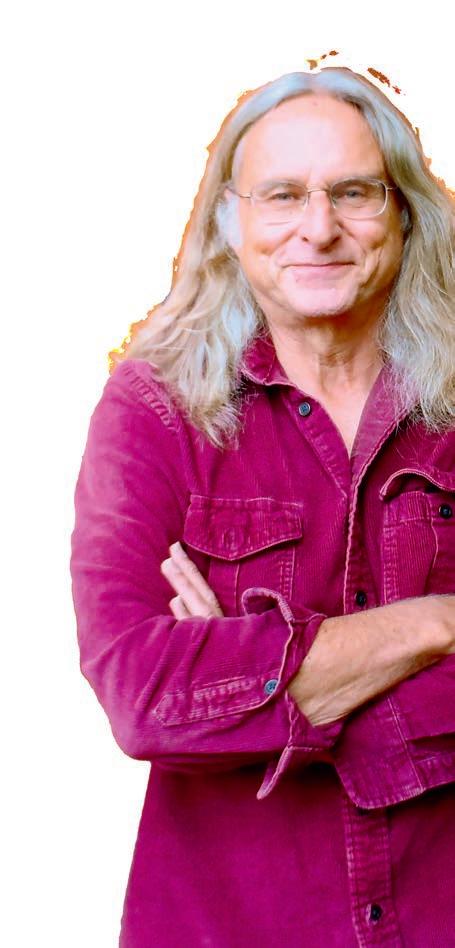
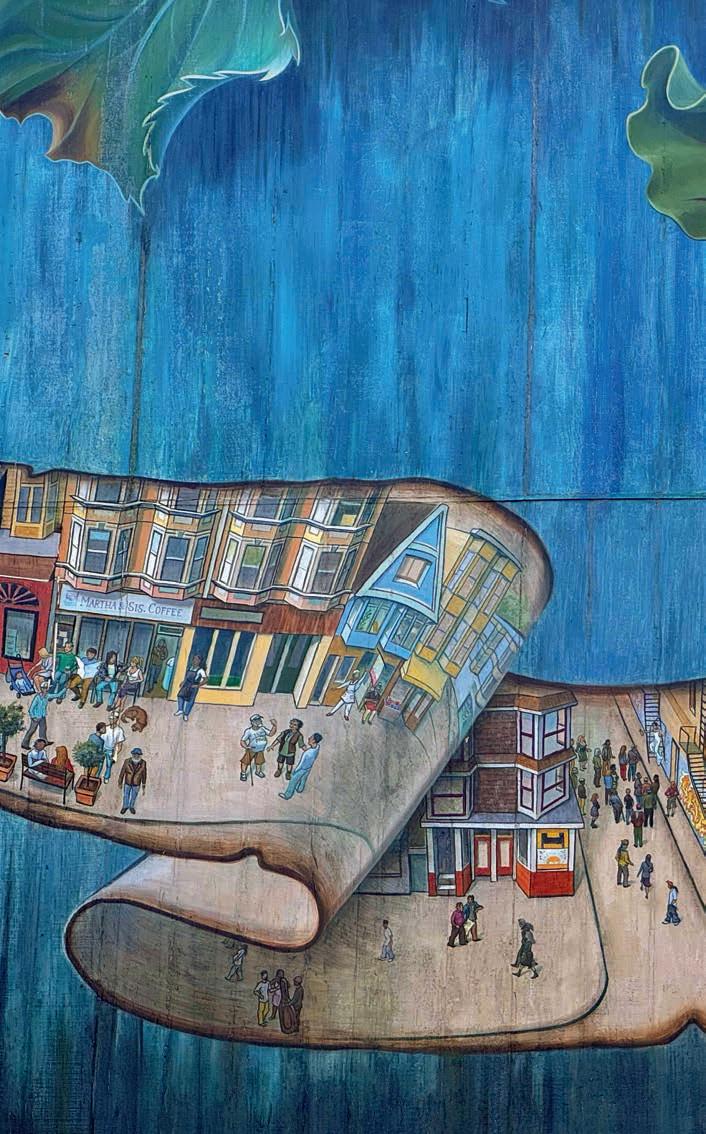
The Emeryville steel plant where the author received some valuable advice.
Why Book-Endorsement Quotes Are Called “Blurbs,”
And
the
Term’s Origins in San Francisco
Until the 1880s, books weren’t much to look at. Covers were unadorned leather or cardboard covered in dark cloth, with the title and author’s name stamped in metal leaf. Then, in a few short years, technological innovations transformed book covers into mini-billboards that screamed, Buy me!
One change was color printing. Color was as old as printing itself. Chinese books had included color for centuries. But color printing on 19th-century industrial presses began during the 1840s when some printers added a second tone to highlight chapter titles or woodcuts. Three-color printing debuted in the 1880s, and four-color (full-color) around World War I. In addition, in 1881, the halftone process revolutionized reproduction of art and photos by transforming pictures into patterns of dots of different sizes that could be printed easily.
Color and halftones arrived not a moment too soon. Mid-19th-century industrial printing substantially increased press speeds, allowing books to be printed faster than ever. But these larger-than-ever printing presses were expensive to own and operate. How did publishers pay for them? By keeping them running. To do this, publishers released more titles. The number of new releases soared, and crowded bookshop shelves like never before. Publishers squirmed, screaming that there were “too many books.” But publishers did not reduce their own releases. They thought everyone else should.
As new releases steadily increased, publishers yearned for novel ways to attract book buyers’ eyeballs. Around 1890, they jettisoned leather covers and began wrapping cardboard-cloth covers in paper dust jackets that featured bold, eye-catching full-color images that looked like mini-billboards. Publishers loved dust jackets. The new covers cost considerably less than leather and their blaze of color attracted buyers. Billboard dust jackets quickly became standard, but two groups couldn’t stand them. One was leather merchants, who lost a lucrative mar-
• Michael Castleman • From The Untold Story of Books
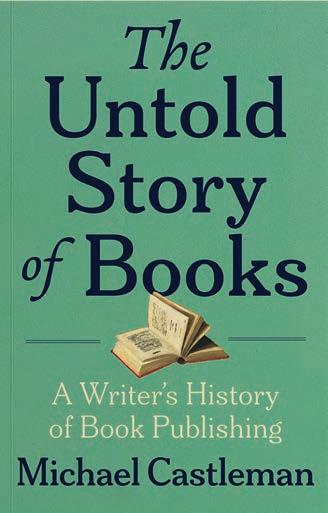
ket. The other was literary snobs, who insisted that color dust jackets looked garish, demeaned literature, and brought quality books, that is hardcovers sold in bookshops, one step closer to cheap paperback pulp fiction sold from wire racks in pharmacies and candy stores. Literary objections to dust jackets added a new adage to the lexicon: You can’t tell a book by its cover.
Early dust jackets featured teaser copy on the back cover, but the flaps that wrapped around the cardboard covers were left blank. Then some enterprising publishers moved the promotional copy to the flaps, freeing back covers for … what? How about endorsement quotes from notable readers who liked the book?
Celebrity book endorsements were nothing new. They dated from 1855 when Ralph Waldo Emerson wrote a note to Walt Whitman congratulating him on the release of Leaves of Grass: “I greet you at the beginning of a great career.” Whitman showed it to his publisher, and the house touted the quote. Other publishers soon followed.
But breathless back-cover quotes raised howls of protest from reviewers, librarians, educators, and bibliophiles. Flagrant exaggerations! Insults to our intelligence!
In retrospect, the controversy over endorsement quotes seems silly. Nineteenth-century readers were interested in what prominent individuals thought, just as today’s social media aficionados are interested in what “influencers” think.
As the kerfuffle over cover quotes raged, in 1907, Frank Gelett Burgess (1866-1951), a San Francisco satirist, released a collection
of humorous essays. As a joke, he concocted a ridiculously over-thetop dust-jacket quote from a fictional admirer, who he dubbed Belinda Blurb. Ever since, promotional quotes have been called blurbs. Who knew the term was coined in San Francisco?
Full disclosure: I’ve blurbed friends’ books generously, and they’ve graciously reciprocated. When one person does this, it’s a kindness. But when every blurb calls every book God’s gift of literature, it becomes something else.
Discerning readers take blurbs with a grain of salt, but covers look naked without them. What? The author couldn’t even get a few friends to say something nice?
TheUntold Story of Books is available at Noe Valley Books.

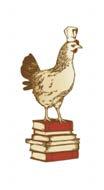
OMNIVORE BOOKS ••• UPCOMING EVENTS
DAVID NAYFELD IN CONVERSATION WITH LIZ PRUEITT • DAD, WHAT’S FOR DINNER • 6:30 P.M. FREE! A chef dad’s playbook for unfussy, flavor-packed family meals that even picky eaters won’t resist.
TONY TAN IN CONVERSATION WITH PATRICK TROVATO • TONY TAN'S ASIAN COOKING CLASS • 6:30 P.M. FREE! Your go-to guide for mastering 100 beloved dishes from the legendary cook, teacher and writer. With wines from Mac Forbes Wines!
OFFSITE EVENT! CAROLINE PARDILLA • MARGARITA TIME • 4:00 - 6:00 P.M. AT TRICK DOG! A sunny ode to the margarita! Sip, sign, and celebrate with legendary bartenders and killer cocktails.
RYAN SHELTON IN CONVERSATION WITH VIRGINIA MILLER • MERCHANT ROOTS COOKBOOKLET COLLECTION • 6:30 P.M.
FREE! An inside look at Merchant Roots’ inventive menus with seasonal stories, recipes, and inspiration from their creative kitchen
SRI BODANAPU • HEIRLOOM CITIES: MUMBAI • 6:30 P.M.
FREE! A design forward love letter to South Asia’s cities blending recipes, history, and personal stories with gorgeous photography.
OMNIVORE BOOKS ANNUAL BOOK SALE! • SAT: 11:00 A.M.6:00 P.M. & SUN: 12:00 P.M. - 5:00 P.M. 20–50% off all books in the shop. Stock up and remember to bring your bag!
ROSIE KELLETT IN CONVERSATION WITH GABY MAEDA • IN FOR DINNER • 6:30 P.M. FREE! A warm guide to affordable, crowd pleasing meals that turn everyday dinners into shared celebrations.
ADRIAN MILLER & DEBORAH CHANG • ASIAN HERITAGE CHEFS IN WHITE HOUSE HISTORY • 6:30 P.M. FREE! The untold stories of Asian heritage chefs who have cooked for presidents from yachts to state dinners.
omnivore books on food
Michael Castleman Has been a Noe Valley resident for 45 years.
Action SF, the National Movement in Your Neighborhood https://m.facebook.com/ActionSFactivism/ Website: http://www.action-sf.com/ Email: ActionSFTeam@gmail.com
Meetings: Usually first Tues., Noe Valley Library, 451 Jersey, 6-7:30 p.m. All welcome. Al-Anon Noe Valley
Contact: 834-9940; office@al-anonsf.org
Meetings: Wednesdays, 7:30-9 p.m., St. Philip Church, 725 Diamond St. (park on Elizabeth Street side; enter on 24th Street).
Thursdays, 7:15-8:30 p.m. Bethany UMC, 1270 Sanchez St. (enter through Clipper Street side door and go up the stairs)
Castro Merchants
Contacts: Terry Asten Bennett, President; Address: 584 Castro St. #333, SF, CA 94114
Email: info@CastroMerchants.com
Comerford Greenway
Contact: Howard Fallon
Email: ComerfordGreenway@gmail.com
Website: www.sanfranciscoparksalliance.org/partners/comerford-greenway/
Monthly workdays in Comerford Alley. Diamond Heights Community Association
Contact: Betsy Eddy, 867-5774
Address: P.O. Box 31529, SF, CA 94131
Website: www.dhcasf.org. Meetings: Second Thursday, 7 p.m. Call for location.
Dolores Heights Improvement Club
Email: info@doloresheights.org
Website: www.doloresheights.org
Meetings: Third Thursday of every second month. Bank of America, 18th and Castro. Duncan Newburg Association (DNA)
Contacts: Deanna Mooney, 821-4045; Diane McCarney, 824-0303; or Lili Wu, 647-0235. Address: 560 Duncan St., SF, CA 94131. Meetings: Call for details.
Eureka Valley Neighborhood Assn.
Contact: Board@evna.org
Address: P.O. Box 14137, SF, CA 94114
Meetings: See website Events. Castro Meeting Room, 501 Castro St., 7 p.m.
MORE GROUPS TO JOIN
Fair Oaks Neighbors
Email: hello@fairoaksneighbors.org
Address: 200 Fair Oaks St., SF, CA 94110
The Fair Oaks Street Fair is traditionally held the day before Mother’s Day.
Friends of Billy Goat Hill
Contact: Lisa and Mo Ghotbi, 821-0122
Website: www.billygoathill.net
Friends of Dolores Park Playground
Contact: Nancy Gonzalez Madynski, 828-5772
Email: friendsofdolorespark@gmail.com
Website: friendsofdolorespark.org
Friends of Christopher Park
Contact: Brynna McNulty, 818-744-4230
Email: friendsofchristopherpark@gmail.com
Website: FriendsofChristopherPark.org
Festival Friends of Glen Canyon Park
Contact: Jean Conner, 584-8576
Address: 140 Turquoise Way, SF, CA 94131
Plant restoration work parties, Wednesday mornings and third Saturday of the month.
Friends of Noe Courts Playground
Contact: Laura Norman
Email: noecourts@gmail.com
Address: P.O. Box 460953, SF, CA 94146
Meetings: Email for dates and times.
Friends of Noe Valley (FNV)
Contact: Todd David, 401-0625
Email: info@friendsofnoevalley.com
Website: friendsofnoevalley.com
Meetings: Two or three annually.
Friends of Slow Sanchez
Contacts: Christopher Keene, Andrew
Casteel
Email: info@SlowSanchez.com
Website: SlowSanchez.com
Friends of Upper Noe Recreation
Center
Contact: Chris Faust
Email: info@uppernoerecreationcenter.com
Website: uppernoerecreationcenter.com
Meetings: Email or check website.
Friends of Upper Noe Dog Owners Group (FUNDOG)
Contact: David Emanuel
Email: info@fundogsf.org
Website: www.fundogsf.org
Glen Park Association
Contact: info@glenparkassociation.org
Website: glenparkassociation.org
Address: P.O. Box 31292, SF, CA 94131
Juri Commoners
Contact: Dave Schweisguth, MI7-6290
Email: dave@schweisguth.org
Website: meetup.com/Juri-Commoners
The group is on hiatus and seeking a new leader. Call Dave. “Tidy up when you can.”
Liberty Hill Neighborhood Association
Contact: Dr. Lisa Fromer, president Email: efromer3@gmail.com
Meetings: Quarterly. Email for details. Noe Neighborhood Council
Contact: Ozzie Rohm or Matt McCabe
Email: info@noeneighborhoodcouncil.com
Website: noeneighborhoodcouncil.com
Meetings: Quarterly at Sally Brunn Library, 451 Jersey St.
Noe Valley Association–24th Street
Community Benefit District
Contact: Debra Niemann, 519-0093
Dispatch: To report spills or debris on 24th Street, call Billy Dinnell, 802-4461.
Email: info@noevalleyassociation.org. Website: noevalleyassociation.org
Board meetings: Quarterly. See website. Noe Valley Democratic Club
Contact: Sam Maslin, President E-mail: noevalleydemocrats@gmail.com Website: www.noevalleydemocrats.org
Meetings: Monthly at Valley Tavern or Todo el Día, dates publicized on website. Noe Valley Farmers Market
Open Saturdays, 8 a.m. to 1 p.m.; 3861 24th St. between Vicksburg and Sanchez Contact: Leslie Crawford, 248-1332
Email: info@noevalleyfarmersmarket.com
Noe Valley Merchants and Professionals Association (NVMPA)
Contact: Kristen McCaffery, President, Kristen@novysf@gmail.com, 829-8383; or Kathryn Gianaras, Vice President, Kathryn@novysf@gmail.com
Meetings: 9 a.m. Call to confirm location. Website: https.noemerchants.com www.NoeValleyMerchants.com
Noe Valley Parent Network
An e-mail resource network for parents
Contact: Mina Kenvin
Email: minaken@gmail.com noevalleyparentsubscribe@yahoogroups.com
Noe Walks
Contact: Chris Nanda
Email: christopher.n.nanda@gmail.com
Website: NoeWalks.com
Meetings: Saturdays, 10 a.m. Starts 24th and Sanchez. Ends Noe and Duncan for photo. San Francisco NERT (Neighborhood Emergency Response Team)
Contact: Noe Valley NERT Neighborhood Team co-coordinators Maxine Fasulis, mfasulis@yahoo.com; Carole Roberts, carole_roberts@faludi.com
Website: https://SF-fire.org/nert
Visit the website to sign up for trainings.
Town Square for Democracy
Contact: Hans Kolbe
Email: townsquarefordemocracy@gmail.com
Meetings monthly at The Noe Valley Ministry, 1021 Sanchez St. Upper Noe Merchants
Contact: Info@UpperNoeNeighbors.com; https://uppernoeneighbors.com/merchants/ Upper Noe Neighbors
Contact: Chris Faust
Email: Hello@UpperNoeNeighbors.com
Website: www.uppernoeneighbors.com
Meetings: Bi-monthly on third Wednesdays. Confirm by email or check website.



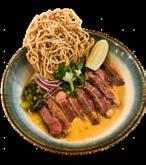










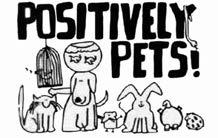
Helen Dannenberg
If
If she absorbed it could she make use of it the spirits, the king, the birds her epiphany – maybe she wasn’t wrong maybe just different, they couldn’t understand, their spirits had jellified, she had her own rivers to cross, road to travel, what was set out for their enchantment was not hers; she tried - accomplished, feasted some played, sorrowed too much she didn't meet the unborn, contemplated babies on the bus their eyes so full of absorbing what do they know that they unlearn where the knowledge of the famished road is pulled into the stratosphere go from dancing to birds not wanting to be born to not wanting to be reborn; If they could see- understand what she did revel in her accomplishments rather than her non-accomplishments all could have been enjoying differences together air trees dancing spirits
Helen Dannenberg’s work can be found in San Francisco City College Forum Magazine, the Noe Valley Voice, publications of Community Living Campaign, Litquake, and Older Writers Laboratory. Previously she used the spoken word in her choreography.
Childhood Paradise
My first temple was the universe. Services were outside. Afterwards, it was hard to go hard to go indoors, to put siding and shingle between me and ravens dancing in the air, purple oak leaves and galaxied nights, still as frozen air. The world outside was my sanctuary to escape house. When the emotional thermostat was up and the psychic radiators hissed steam, I went outside. Robins, wild oats, maples, clouds, marigolds, became friends. They were gentler and prettier than my fathered family. I had no other temple than froggy ponds, deer tracks and breeze.
My father was an atheist and had me be the same. I invented my own religion. Its genesis was beds of moss under caverns of pine boughs, on tree branches climbed twenty feet off the ground, in sweet clams dug from sucking low tide muck. I took wine and broke bread during lightning storms that bolted me from bed, during hurricane’s tidal surges, in crystalline snowfall slanting in moonlight and street lamps.
from drill bits - an inclined plane wrapped around a column; and from transporting shrubbery in a wheelbarrow, when father used our labor to plant flowers, ivy and myrtle, azaleas and laurel.
Beaches were all season, sunny saltaired walkways. I collected shells, crab claws and carapaces, fish bones and polished quartz pebbles. I tested my pain tolerance against fiddler crab bites. In summer we swam for hours in the bay. For the cost of a rented rowboat, we fished a bushel of bugeyed flounder and iridescent porgies. We dug steamers and chowder clams my mother turned into soup. My father made us clams casino with the smaller cherrystones. He opened them, put a bit of bacon, a bit of cheese and breadcrumbs on top; slipped them under the broiler for a minute. We scorned mussels until my parents tried meules marinier on a trip to Europe. I cherished fishing and clamming with my father.
• Carol Casey •
The Visitation
The stable door, carelessly ajar, opens to the cut-off road. In the dark we file out, each hoof lifted in quiet, turn toward where we know the old orchard to be. Behind the window in a brand-new house, a small someone clutches golden carrots, stands and waits for us. We stop there, shifting on our strong legs. We shake our heavy heads, breathe out steam, crunch carrots, go on our way to mark with hoof prints in grassy lawns the places sweet apple trees used to be.
Carol Casey’s poems How to Make a Beach and It’s All About Acceptance were nominated for a Pushcart Prize. She moved to San Francisco from Maryland’s Eastern Shore.
I learned to pull and squeeze nourishment from teats watching Pete Schobol milk his Guernsies and Holsteins, pastured around the corner. My father and we three sons dug out Pete’s barn for our garden manure. It’s nitrogen, phosphorous and potassium, calcium, magnesium and sulfur sharpened our radishes and scallions; sweetened our peppers, corn and beets and juiced our tomatoes. I visited grubs, ants, beetles, worms, and caterpillars when I turned the manure into the soil in spring to prepare the garden for seeds. Radishes and green onions were the first to come up. We ate them as soon as we could get them out of the ground;washed, salted and mixed with sour cream and cottage cheese, Grandmother Dora’s recipe.Breakfast eggs and Sunday dinners came from our backyard hen house. Papa sliced the hens’ necks with his axe. They did run around headless for a second, before getting blood drained and plucked. I crawled over our lawn for wild sorrel for Grandma to make shav. We picked pears, apples and walnuts from abandoned orchards we came upon during family hikes. My father had acquired a nose for free food during The Great Depression. Blackberries and strawberries grew wild in the fields we ran through playing hide-and-seek, ringolevio and Red Rover, Red Rover, come over, come over.
Out of the house, I walked through the back gate, down Timothy Lane to the woods where it ended. Oaks. hickory, maples, pine, hemlock, spruce and birch shaded the path up sleigh-ride hill and down to ice skating Frog Pond. It was kids only territory: catch frogs and turtles, find salamanders under rocks, skip stones across the water. In winter teens drank beer around a fire. We young ones held hands, speed skated in a row; stopped short. When the end child let go, momentum whipped them across the pond. I learned more about creation’s physical laws from a shovel - a lever;
I was happy with him when we walked beaches and dirt roads through local forests. Then father was light; told stories and sang songs. He forgot his anxieties, was young again, off on adventures I was delighted to share with him. We often walked Jayne’s Hill, the highest point around. The way began at the end of a dirt road where time went backward. There was the abandoned Peace and Plenty Inn which had a New York State Historical Commission plaque proclaiming that Washington had slept there during the Battle of Long Island. There was a fresh water spring gushing from a pipe that emerged from rocks. We lowered our bodies, put our mouths to the chilling flow; drank like dogs.
My paradise crashed when suburbs came. Bulldozers crushed trees, cement sumps replaced ponds, industrial sod smothered meadows. The earth became a place I trampled withfootball cleats and car tires. But at least once a year I went to mountains to caress the earth with careful steps. They brought me back to my childhood’s sanctuaries.
Daniel Raskin lives in Bernal Heights. He is a retired preschool teacher; worked at the Early Childhood Education Center at San Francisco State. He has three grandchildren. Daniel writes with The Owls at The Bernal Library and with the MERI center at UCSF.
